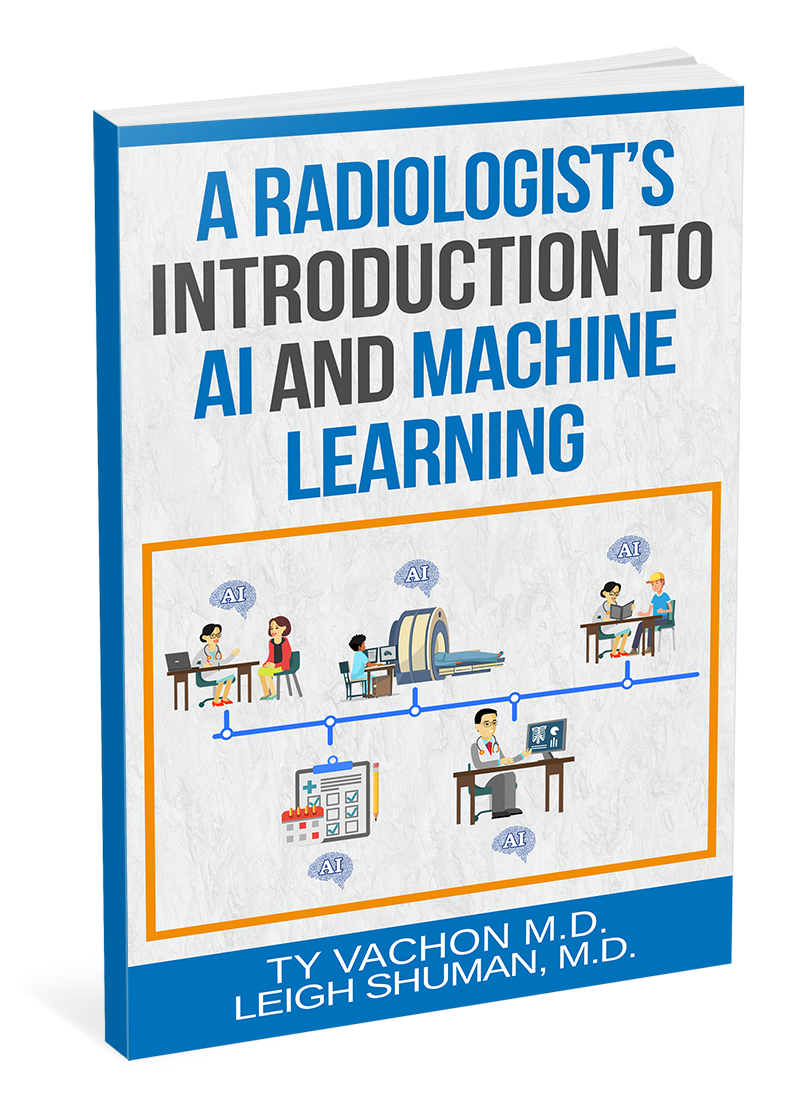A RADIOLOGIST’S INTRODUCTION TO AI AND MACHINE LEARNING
Leigh and I wrote this book to help radiologists.
With all of the news of artificial intelligence and machine learning it can be daunting to find a place to start.
You will need no computer background to read this book.
Program directors or professors may use this a tool to introduce AI and ML to trainees.
The book will present the difference between artificial intelligence, machine learning and neural networks. You will learn that a neural network is similar to human brains and ‘layers’ are similar to synapses.
Just like the first few years of medical school presented new vocabulary, ML and AI have some particular words that are described simply.
There are some similarities between residency training and ‘training an algorithm’ which will be explained.
After reading this book, you will be prepared to read radiology journal articles that showcase AI and ML applications.




